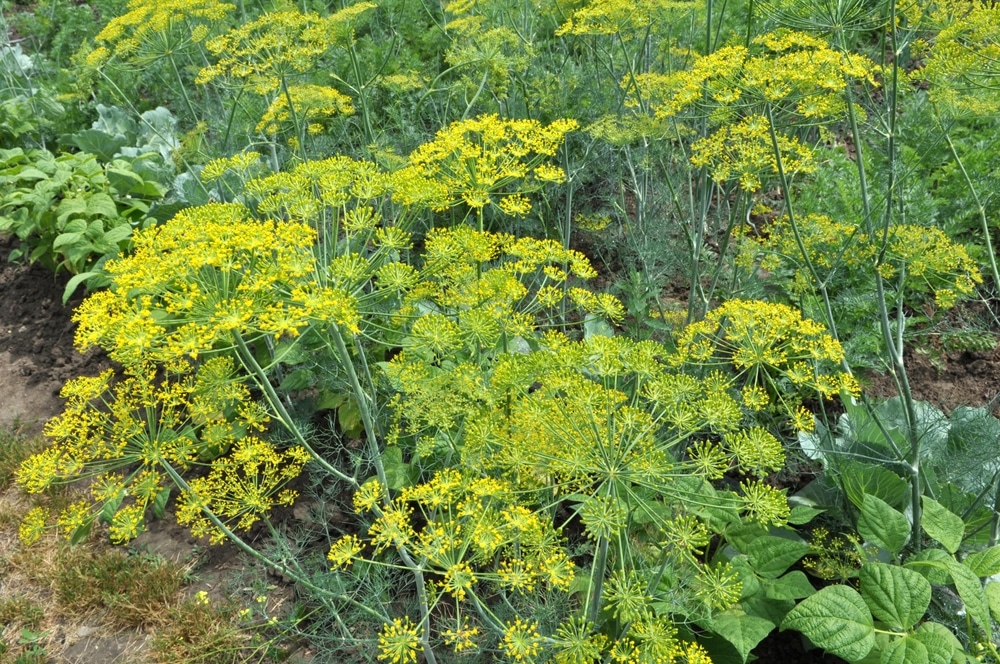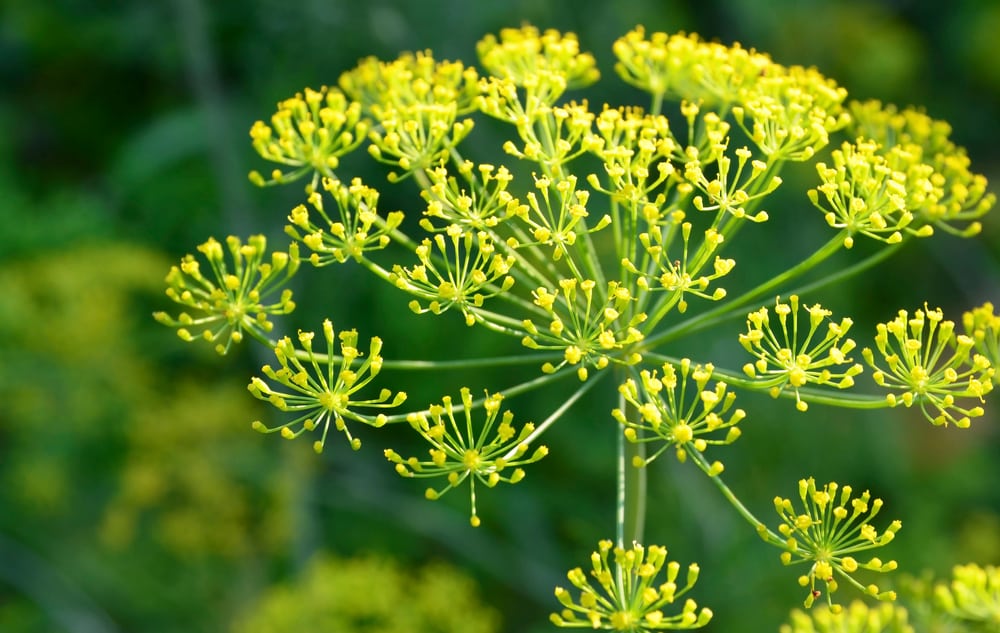Looking at your garden, you might think something is missing. It might be too open or just need a little more greenery. Either way, adding an Elephant Dill to your yard can be a great way to fill that space. Not only are they beautiful and low maintenance, but they can also provide you with some fresh herbs to use in your cooking. Here is everything you need to know about Elephant Dill care.

| Botanical Name | Anethum Graveolens |
| Common Name | Elephant Dill |
| Plant Type | Annual |
| Flower Color | Small, yellow, and clustered flowers |
| Size When Mature | 36-48 inches |
| Bloom Time | Summer |
| Sun Requirements | Full to Partial sun |
| USDA Hardiness Zones | 6 – 9 |
| Soil PH Range | 5.5-6.5 |
| Soil Type | Acidic, well-draining |
| Water Needs | Medium |
| Native Area | Europe |
What You Need to Know About Elephant Dill
A member of the Apiaceae family and native to Europe, Elephant Dill is an annual herb that grows about 36-48 inches tall. It has feathery and delicate leaves that are green in color. The flowers are small and yellow, growing in clusters at the top of the plant which blooms during summer.
Being a herb, the leaves and seeds of Elephant Dill are edible and can be used in cooking. The leaves have a milder flavor and can be used as a replacement for dill weed in recipes, while the seeds have a more intense flavor and are often used in pickling.
Elephant Dill is a great option if you’re looking to add some greenery to your garden but don’t want to put in the extra effort. They are relatively low maintenance and can even tolerate some neglect.
How to Care for Elephant Dill
Here’s everything you need to know about growing and caring for a thriving Elephant Dill:
Light
Giving the plant at least 6 hours of sunlight a day is important for Elephant Dill care. However, if the sun is too intense, the leaves can wilt, and the plant will become stressed. Temperature stress is one of the main reasons Elephant Dill doesn’t flower.
Allowing the plant to be in the shade for part of the day, especially during the heat of summer, can help prevent this.
Water and Soil Needs
The Elephant Dill is relatively drought-resistant and can go long periods without being watered. The plant should be fine if you keep the soil moist during the first few weeks after planting. After that, you only need to water it when the soil starts to feel dry.
As for soil, Elephant Dill is not picky and will grow in most types of soil as long as it is well-draining. Having soil with a pH range of 5.5-6.5 is ideal but not necessary.
Temperature Requirements
Being a hardy plant, it can tolerate a wide range of temperatures. For example, it can tolerate temperatures as low as 24˚ F as long as it is sunny outside. Additionally, the plant is hardy in USDA zones 6-9, making it a great option for those who live in cooler climates.
Fertilizer
The best fertilizer to use on Elephant Dill is one that is organic and slow-releasing. This will provide the plant with a steady supply of nutrients without burning the roots. It’s best to fertilize the plant every 4-6 weeks during the growing season.
Common Diseases
Like most plants, Elephant Dill is susceptible to a few diseases. The most common include powdery mildew, downy mildew, and root rot.
Powdery mildew is a white powdery fungus that typically appears on the plant’s leaves. It is caused by too much humidity and not enough air circulation. You can remedy this by watering the plant at the base instead of above and providing it with more air circulation. When planting in pots, you can also add a layer of gravel to the bottom for drainage.
Next is root rot, caused by overwatering or poorly drained soil. To prevent this, ensure you only water the plant when the top inch of soil feels dry. If the plant is already affected, you can try to save it by removing it from the pot and carefully removing the affected roots.
Finally, downy mildew is another fungal disease that appears as yellow or brown spots on the plant’s leaves. It is caused by humid weather and can be remedied by providing more air circulation and avoiding overhead watering.
Knowing the diseases that can affect your Elephant Dill is important for proper care. By being aware of the signs and symptoms, you can catch the disease early and take steps to prevent it from spreading.
Elephant Dill Propagation
Propagating Elephant Dill is relatively easy and can be done by cuttings.
To do this, take a 4-6 inch cutting from the tips of the plant and remove the lower leaves. Next, place it in water or moist soil and wait for it to root. Once it has rooted, you can transplant it into a pot or your garden. Dipping it in rooting hormone will help to speed up the process.
After the plant has been transplanted, it’s important to give it time to adjust. Water it regularly and fertilize it every 4-6 weeks.

